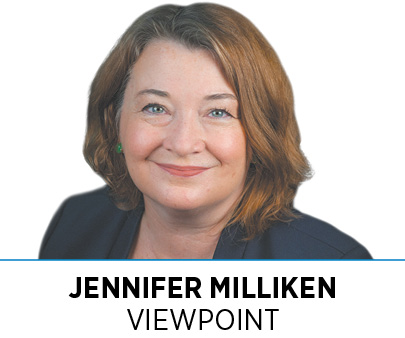Subscriber Benefit
As a subscriber you can listen to articles at work, in the car, or while you work out. Subscribe Now On Nov. 1, amendments to Indy Rezone went into effect. These changes are important for a variety of reasons and demonstrate one of Indy’s strengths—collaboration among public, not-for-profit and private partners to get things done and do them well. Here are the benefits:
On Nov. 1, amendments to Indy Rezone went into effect. These changes are important for a variety of reasons and demonstrate one of Indy’s strengths—collaboration among public, not-for-profit and private partners to get things done and do them well. Here are the benefits:
Economics. The Indy Rezone project made key changes to the city-county zoning ordinance that went into effect in 2016. While Indy Rezone supported many of Indianapolis’ development goals, after five years of administering the regulations, city staff identified several limitations. The zoning didn’t respond to the walkable, mixed-use developments consumers demand today, making it difficult to bring those places to market. The latest revisions allow the most suitable, in-demand developments to be built along current and planned bus rapid transit corridors, protecting and capitalizing on Indianapolis’ investments.
Equity. A limited supply of walkable neighborhoods can lead to displacement for people with lower incomes. To increase transportation options, our community has made smart decisions, from approving bus rapid transit to supporting active transportation infrastructure like the Indianapolis Cultural Trail.
In addition, in 2019, the Indianapolis Neighborhood Housing Partnership launched the city’s first $15 million equitable transit-oriented development fund, created with the city’s Department of Metropolitan Development and other partners to preserve and create affordable-housing units within a half mile of transit corridors. The recent zoning amendments bolster these investments, which are important to serve residents who might not have or want a car. Updating regulations to promote walkable development can potentially increase housing supply while mitigating displacement.
Sustainability. By encouraging in-demand development and walkable corridors, the Indy Rezone amendments reduce the need for driving. The approach is economically sustainable as well, with dense developments costing less to develop and maintain and returning more tax revenue per square foot compared to areas with sprawling, car-oriented land patterns.
The city of Indianapolis should be commended for seeking assistance from outside partners to help make this vision a reality.
To accelerate the goals in Indy’s sustainability and resiliency plan (called Thrive Indianapolis), the city pursued and received support from the Bloomberg Philanthropies American Cities Climate Challenge. The challenge helps 25 cities set and surpass climate goals by ramping up action in the two highest-emitting sectors in cities: transportation and buildings. Climate Challenge partners—including the National Resources Defense Council, Urban Land Institute and Delivery Associates—collaborated with the city to turn a goal into reality.
In addition, city staff engaged with community development corporations and neighborhood associations to discuss the amendments and what they meant to their communities. The Indy Rezone efforts also happened in concert with priorities of local agencies like IndyGo and the Indianapolis Metropolitan Planning Organization, which is currently preparing an updated Comprehensive Economic Development Strategy.
By partnering with the Urban Land Institute, the city benefited from its position of including experts from every sector of the real estate and land-use community. City staff sought input from real estate developers and shared information at ULI Indiana educational programs. The Indy Rezone amendments align with ULI’s mission priorities related to housing attainability and decarbonization of the real estate sector, as well as its pursuit of more equitable communities.
Now peer cities like Cincinnati; Columbus, Ohio; and Austin, Texas—many of which already have transit in place—are looking to Indianapolis as a model for implementing transit-oriented policies.
With the Indy Rezone amendments taking effect this month, the city’s DMD is working closely with developers to help them understand the changes and apply them to their projects. But much like development is a never-ending process, ordinances are considered living documents. We must keep the dialogue going among private developers, the public sector and residents as we work to make Indy more equitable and resilient.•
__________
Milliken is executive director of ULI Indiana, the local chapter of the Urban Land Institute.
Please enable JavaScript to view this content.
